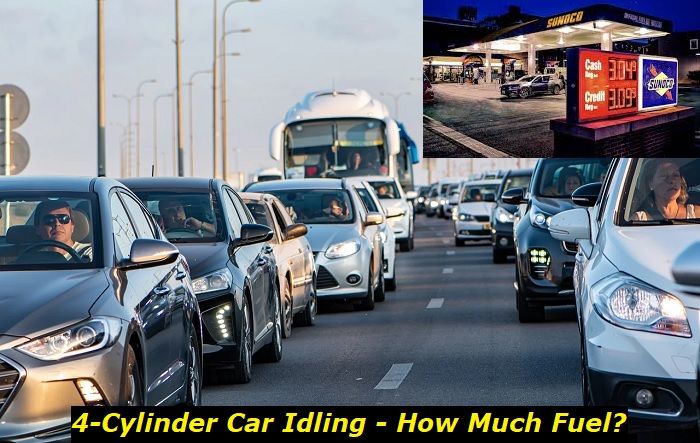The term "VTEC," which stands for "Variable Valve Timing and Lift Electronic Control," is a registered trademark of Honda. This is Honda's VVT system or variable valve timing.
Engineers may make the most of the engine's high and low rpm ranges using variable valve timing. One way to do this is by adjusting the valve timing in the cylinder head.
.jpg)
How Does VTEC Work?
Different from a single camshaft, a VTEC camshaft features two cams of varying diameters. When the engine speed is high enough, an electric solenoid valve opens, and a pin, driven by oil pressure, moves the camshaft to a more extensive cam profile. In doing so, the valves open more widely, letting in more air.
However, the injection method allows for more fuel, increasing engine power. In addition, this innovation avoids the pitfalls of employing bigger camshaft lobes in favor of a more refined and efficient idle at lower engine speeds.
In short, VTEC makes it possible for an engine to combine the best features of high horsepower. It combines a high-RPM engine with a lower-RPM engine and greater low-end torque.
VTEC History
The development of VTEC throughout time has resulted in several distinct implementations. These advancements have allowed Honda's engineers to incorporate efficient performance into almost every model.
Honda automobiles, particularly high-performance models, also have a solid reputation for dependability. Despite the apparent complexity and sophistication of the mechanical shifting camshaft mechanism, VTEC system breakdowns in Honda engines are rare.
Old engine seals or undetected leaks are common causes of failure. However, it is improbable that a regularly serviced VTEC engine will have a catastrophic failure after hundreds of thousands of miles.
Multiple VTEC Engine Models
All VTEC models have kept the basic concept of variable valve timing even as they have evolved.
Honda's engineers quickly used the technology, adapting VTEC to improve fuel economy. Therefore, this is rather than just the power band at both ends of the rpm range. This model is the VTEC-E kind.
The standard VTEC system differs from the racing version while sharing specific components, such as an electronic oil pressure system with a solenoid valve.
One intake valve is dormant because of the camshaft profile at low rpm. In the absence of VTEC-E, a 16-valve engine, for instance, operates with 12 valves. At higher engine speeds, the idle valves are entirely open. Since the engine has less air, it operates at lower RPMs and burns much less fuel.
As the most advanced VTEC technology, Honda's i-VTEC impresses. "i-VTEC" is an abbreviation for "intelligent VTEC." It describes integrating modern variable timing control (VTC) technology into the classic VTEC system. With variable timing control (VTC), the engine can adjust the camshaft's timing wheel.
Should You Choose a Honda with VTEC?
Whether you're looking for a new or pre-owned Honda, your decision to obtain one with a VTEC engine should depend on your tastes and your wallet. However, most modern Hondas use VTEC engines, so you shouldn't have trouble finding one in your pricing range.
You can save a few bucks and give up the VTEC logo if you're on the hunt for an older used Honda and find one that fits all your requirements but doesn't have a VTEC engine.
If that's the determining factor, then it's OK. However, if you need a cheap car and don't mind giving up some power, there's no shame in driving a commuter without a VTEC engine.
You can be certain that whatever Honda you buy will function reliably and safely. A Honda will get you where you need to go with reliability and efficiency, regardless of the trim level you choose.
Which Honda Engines Are VTEC-Equipped?
Honda has used VTEC engines in various cars, but they are not standard equipment. With the i-VTEC engine, Honda has refined the original VTEC technology to provide a more seamless acceleration.
Modern automobiles like the Honda Accord, Civic Type R, and Clarity Plug-In Hybrid use the tried-and-true VTEC system. They all feature the classic VTEC system rather than the updated i-VTEC version. Therefore the VTEC feeling they experience is more intense.
Many Honda cars, including the Civic Sedan EX and LX, Civic Coupe LX, HR-V, Pilot, Ridgeline, and Odyssey, all have Honda's innovative and efficient i-VTEC engine technology as standard equipment. Since many of them share the same motors, we may group them. Getting a car with VTEC is a great way to retain the vehicle's economy while increasing its peak speed and acceleration.
Does VTEC Improve Acceleration?
VTEC, which stands for Variable Valve Timing and Lift Electronic Control, is a kind of valve timing that increases engine power by boosting airflow in and out of the engine. However, it is hard to assess the amount of power gained by VTEC engines since they don't undergo tests before and after the VTEC installation.
Honda's VTEC has been well-received since its introduction thanks to its ability to increase output at higher RPMs. This is when the power curves of most normally aspirated engines begin to flatten. Yet, VTEC goes on chugging along much as it does at lower RPM.
Typically, a VTEC motor has 20-30 more horsepower at the top end than similarly sized motors from its rivals. However, as more and more engines use turbochargers, VTEC has begun to lose some of its competitive edges.
Technical Details About Honda's VTEC Engine
Unique technical details distinguish each of the VTEC engines. These details are:
- Displacement can be different - the VTEC system has been used in pretty much all popular engine produced by Honda in recent years
- All of the first engines in this series were non-VTEC models, however, in 1996 Honda started making DOHC VTEC versions of these engines
- The power output of these motors is pretty impressive as for non-turbocharged engines
- Also, VTEC affects torque and makes it higher for low RPM which is great for overall performance
- All engines are exclusively gas engines that rely on natural aspiration
VTEC engines have a monotonous quality about them. Since VTEC is their cutting-edge tech, there will surely be issues. However, even after extensive use, this engine continues to perform well. It's built to last and won't break for a very long time. Therefore, the most premium oils and filters are unnecessary for their upkeep.
VTEC Engine Longevity
There is a strong emphasis on durability in the construction of VTEC units. Except for the ones made for speed, they're all great. However, a Honda with the factory-installed 200-horsepower B18 engine will not last as long as you'd want. Type R engines that produce more than 100 hp from a liter of displacement are never dependable unless turbochargers are in the picture.
However, most of the series' engines are surprisingly sturdy and reliable upon inspection. Many of the service experts at Honda dealerships and repair shops ranked the VTEC engines as some of the most dependable and long-lasting in the company's history. Moreover, these motors are generally reliable, at least with little mileage. While it's true that most engines have issues once they reach 200,000 miles, this is the tipping point when things start to go south.
A few issues may leave the owner of a Honda equipped with this engine feeling let down. However, these issues are by no means universal for all engines. This proves that even flawless engines may have broad issues from time to time.
VTEC Engine Problems
Both water pumps and thermostats wear out eventually. The issue is that it's not cheap to replace a water pump since doing so often necessitates replacing the timing belt and the tensioners and bearings.
It is common for head gaskets to fail on engines with many miles on the clock. Therefore, you should inspect the valves and replace the head gasket every 150,000 miles at the very least, simply because you need to remove the cylinder head.
After 50,000 miles, replacing the timing belt is a good idea. Because of the potential for belt failure and the high cost of repairing the head, you could do this more often. If you need to replace the belt or bearings, it's better to splurge on high-quality parts rather than skimp.
Every 25,000 miles, you'll need to go in and adjust the valves. Without it, the car won't go as it should. The engine will get clogged, and the gas economy will decrease with time. With no hydraulic tappets, this procedure requires constant monitoring.
Oil consumption is typically normal for distances of 100,000 miles or more. In the beginning, consumption is modest, but it quickly rises. Beyond 200,000 miles, add 1-2 quarts of oil every 5,000 miles. That's OK, by the way.
In conclusion, if you buy a Honda with a VTEC engine, you enjoy a high-RPM performance with low-RPM stability and fuel economy. In addition, the change is transparent, resulting in consistent performance over the whole powerband.
About the authors
The CarAraC research team is composed of seasoned auto mechanics and automotive industry professionals, including individuals with advanced degrees and certifications in their field. Our team members boast prestigious credentials, reflecting their extensive knowledge and skills. These qualifications include: IMI: Institute of the Motor Industry, ASE-Certified Master Automobile Technicians; Coventry University, Graduate of MA in Automotive Journalism; Politecnico di Torino, Italy, MS Automotive Engineering; Ss. Cyril and Methodius University in Skopje, Mechanical University in Skopje; TOC Automotive College; DHA Suffa University, Department of Mechanical Engineering






Add comment